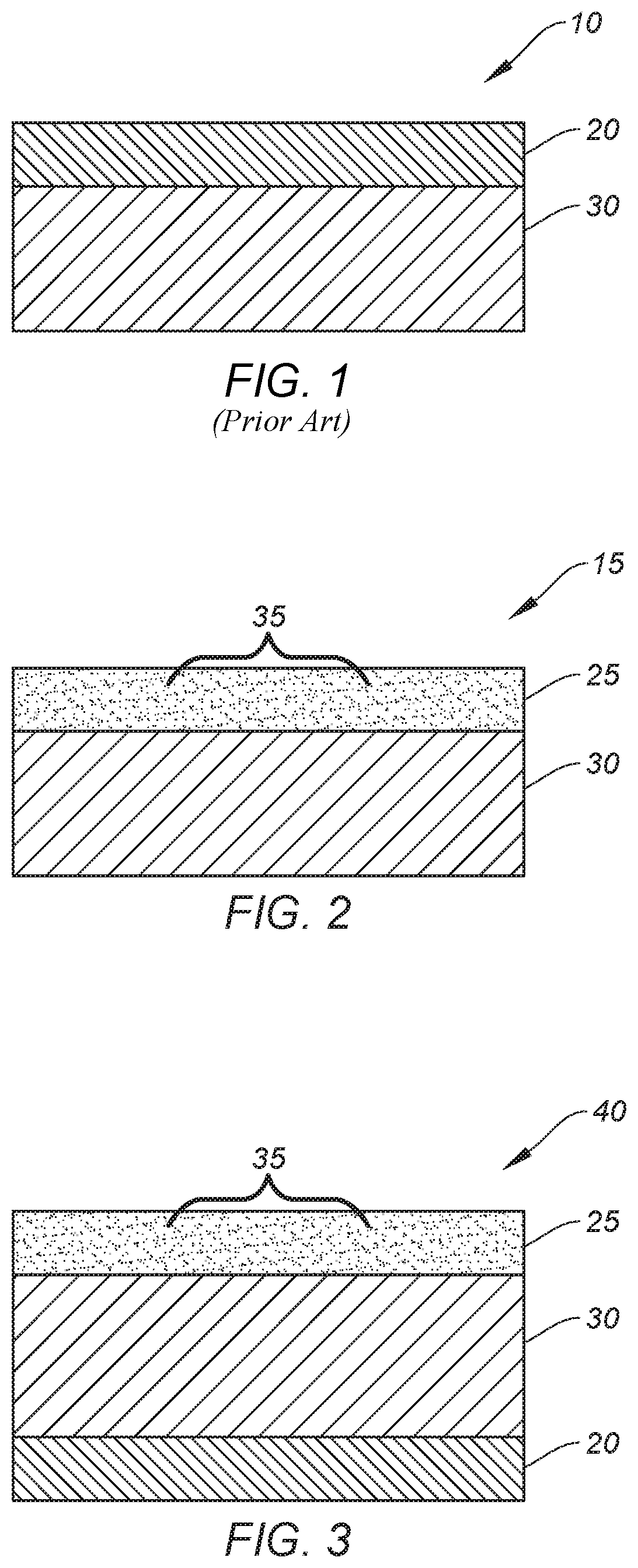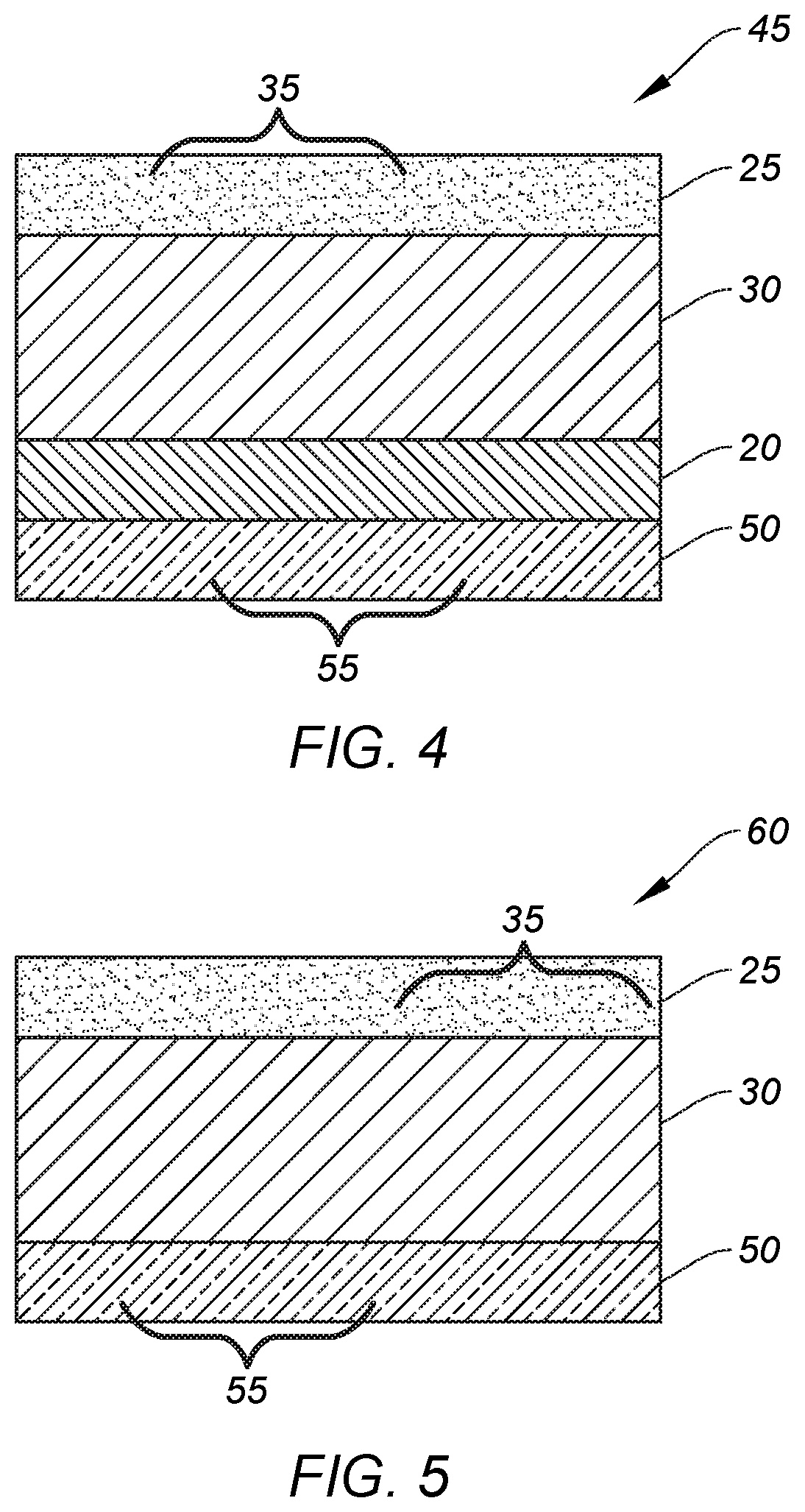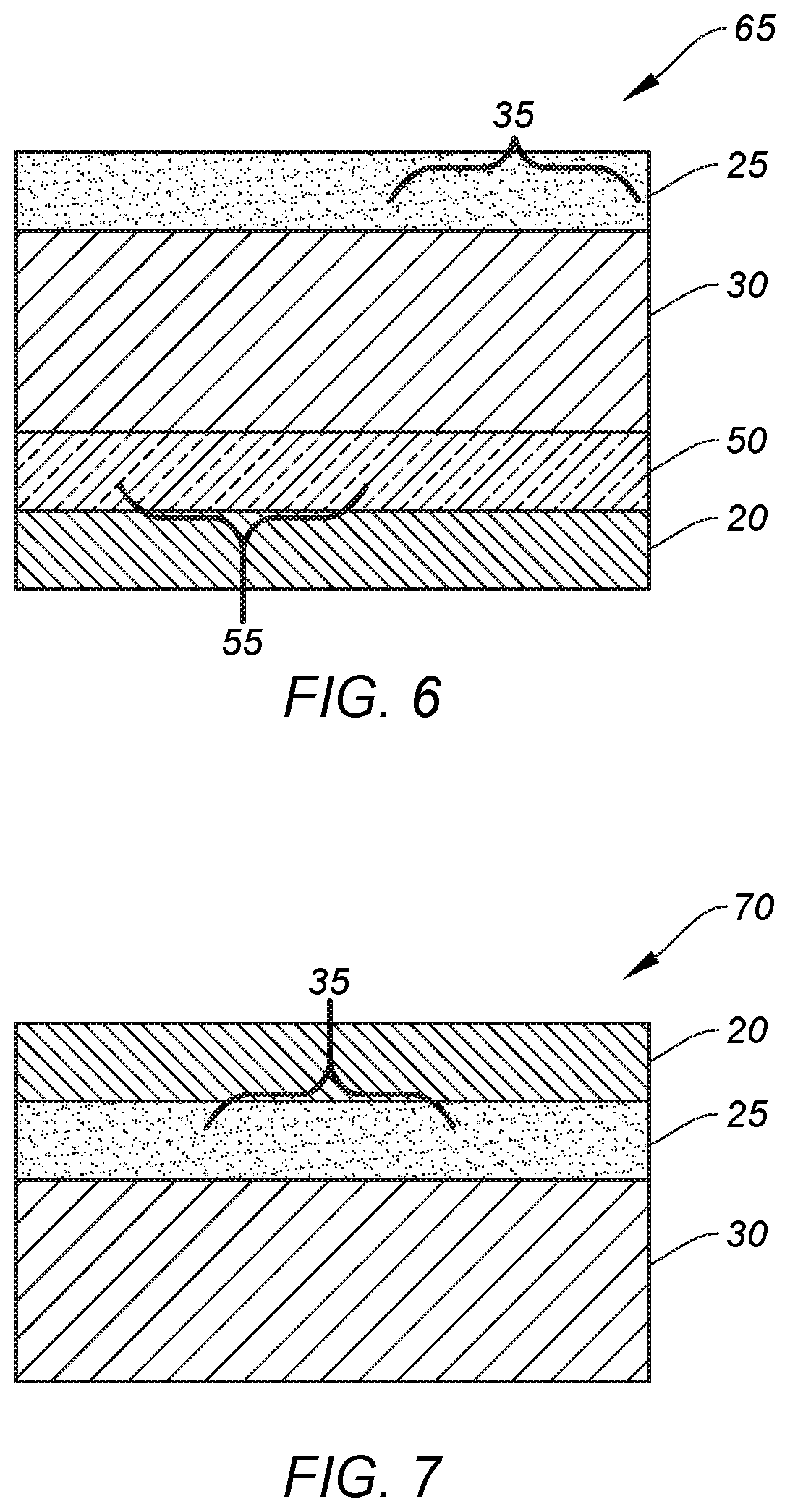Piezoelectric capacitor
a technology of piezoelectric capacitors and capacitors, applied in piezoelectric/electrostrictive device material selection, device material selection, coatings, etc., can solve the problems of difficult to make either thick or thin film piezoelectric devices of high sensitivity, pzt can be replaced, and find materials with comparable performance, etc., to achieve the effect of enhancing the piezoelectric response of piezoelectric materials
- Summary
- Abstract
- Description
- Claims
- Application Information
AI Technical Summary
Benefits of technology
Problems solved by technology
Method used
Image
Examples
invention example 1
[0370]3 weight % of spherical crosslinked poly(styrene-co-divinyl benzene-co-ethylvinyl benzene) (b) particles (d50 particle size of 46 μm) was added to a weighed amount of the Comparative Example 1 EC composition described above before mixing using the FlackTek Speedmixer™ DAC 150 speedmixer.
invention example 2
[0371]7 weight % of spherical crosslinked poly(styrene-co-divinyl benzene-co-ethylvinyl benzene) (b) particles (d50 particle size of 91 urn) was added to a weighed amount of the Comparative Example 1 EC composition described above before mixing using the FlackTek Speedmixer™ DAC 150 speedmixer.
invention example 3
[0372]7 weight % of spherical crosslinked poly(styrene-co-divinyl benzene-co-ethylvinyl benzene) (b) particles (d50 particle size of 201 μm) was added to a weighed amount of the Comparative Example 1 EC composition described above before mixing using the FlackTek Speedmixer™ DAC 150 speedmixer.
[0373]The typical volume weighted frequency distribution for the particle size of crosslinked polystyrene particles used in Invention Examples 1-3 are shown in FIG. 21. The crosslinked polystyrene resin particles are comprised of beads of polystyrene resin (copolymer of styrene and divinylbenzene / ethylvinyl benzene mixture) as described in U.S. Pat. No. 7,441,717 (Majka et al.) and U.S. Pat. No. 5,478,705 (Caekai et al.) and are notated as Polybead® 50, Polybead® 100, and Polybead® 200 in the TABLE IV above. The preparation of such crosslinked polystyrene particles and other resin particles that are useful in the present invention is described in the noted U.S. Pat. No. 5,478,705 the disclosur...
PUM
| Property | Measurement | Unit |
|---|---|---|
| polydispersity coefficient | aaaaa | aaaaa |
| polydispersity coefficient | aaaaa | aaaaa |
| electrical conductivity | aaaaa | aaaaa |
Abstract
Description
Claims
Application Information
 Login to View More
Login to View More - R&D
- Intellectual Property
- Life Sciences
- Materials
- Tech Scout
- Unparalleled Data Quality
- Higher Quality Content
- 60% Fewer Hallucinations
Browse by: Latest US Patents, China's latest patents, Technical Efficacy Thesaurus, Application Domain, Technology Topic, Popular Technical Reports.
© 2025 PatSnap. All rights reserved.Legal|Privacy policy|Modern Slavery Act Transparency Statement|Sitemap|About US| Contact US: help@patsnap.com



